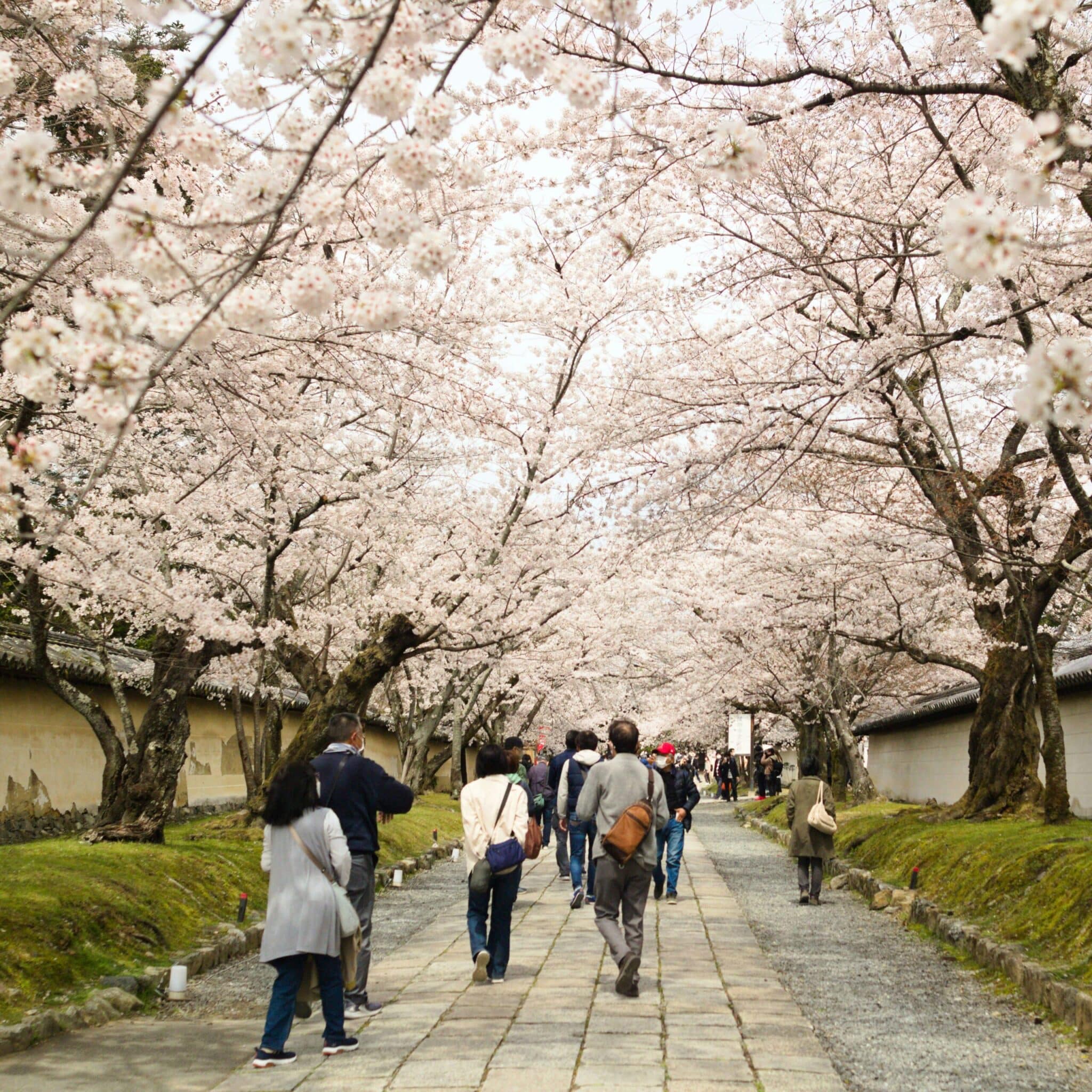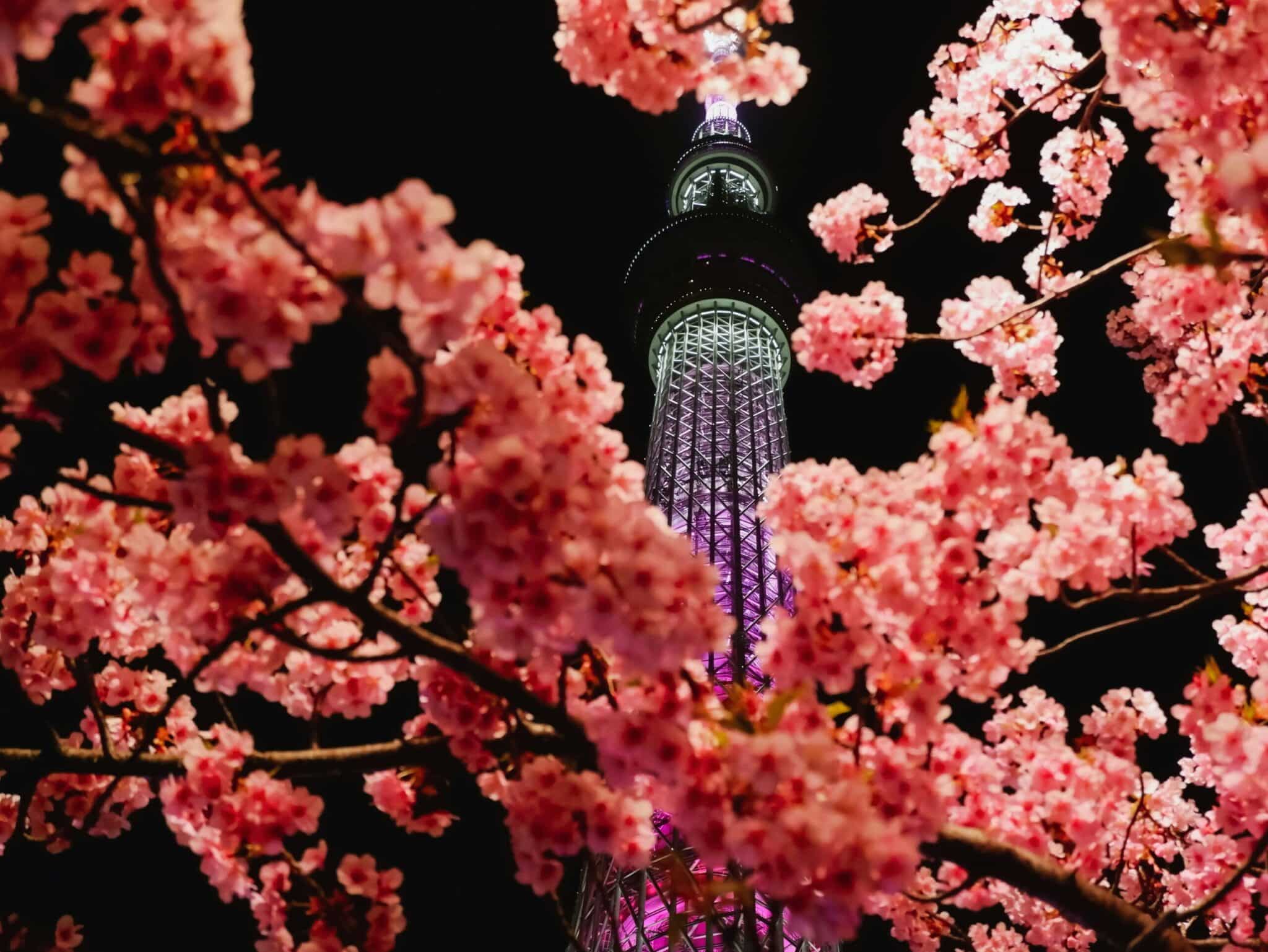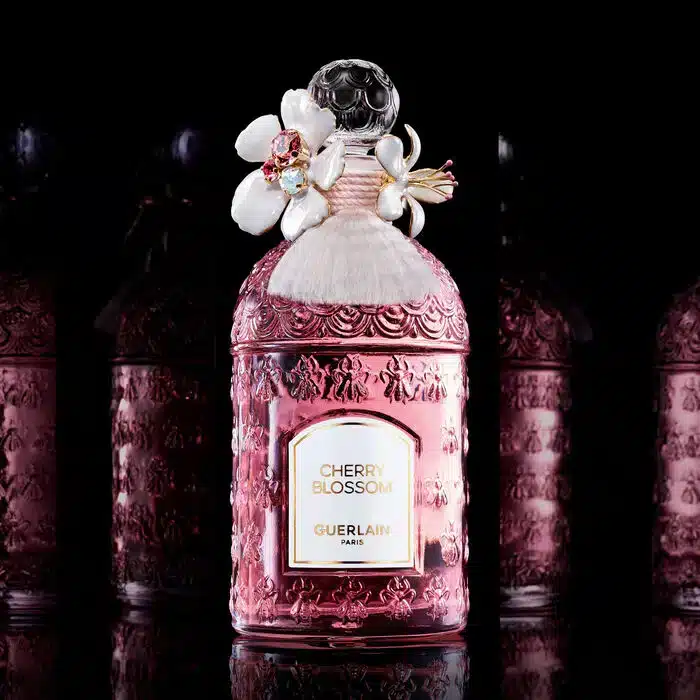Spring is here, and with it the return of fine weather and the rebirth of trees. And there’s one flower that particularly represents the new season in Japan. Discover Hanami, the custom in the Land of the Rising Sun that invites you to savour the beauty of cherry blossom.
Taking the time to enjoy the cherry blossom: it’s a tradition that couldn’t be happier. Every year, from late March to early April, the Japanese gather in their parks and gardens to admire the “sakura”, or cherry trees, which are adorned with pretty, delicate blossoms in shades of pink and white.
A centuries-old tradition

This custom, known as Hanami, originated in Japan in the 8th century, during the Nara period when many of the foundations of Japanese culture, influenced by China and the Tang dynasty, were laid. At the beginning of April, the elites would gather to recite poems and drink sake. The Japanese appropriated this tradition and centred it on the sakura, heralding the rice planting season. Believers would make offerings at the foot of the cherry trees to please the gods nestled inside the trees and pray for a bountiful harvest, all the while drinking sake.

A century later, the emperor Saga, during the Heian period, took up this custom and made it an annual festival at the imperial court in Kyoto. Contemplating the flowers was an opportunity to write poems about the beauty of the sakura and to taste the best sakés and the finest dishes. The tradition was then adopted by the samurai and then by the people. It was not until the 12th century that this ritual became a bank holiday.
Hanami still celebrated in the modern era
Today, the practice is practised all over the country. In fact, there is an official list of the most famous places to admire the sakura. The flowering starts in the Okinawa archipelago, in the south of the country, and works its way up to Hokkaido.
When the cherry trees are in bloom, the Japanese gather with friends and family in parks and gardens. For a month, they gather for picnics and walks to enjoy the cherry blossoms. With their refined petals, delicate colours that oscillate between pink and white, and bewitching fragrance, the blossoms capture the attention of the whole country, and far beyond.

Indeed, their influence has spread internationally. Travellers from all over the world visit the Japanese archipelago at this time of year to enjoy this unique natural spectacle. According to the Japan National Tourist Board, spring is the most popular season for tourists. In 2019, more than eight million people visited the country during Hanami. A number of studies have shown that March and April account for the lion’s share of Japan’s annual tourism revenue.
Brands take on tradition
Tradition and beauty: that’s all it took for brands to seize on this custom. Guerlain has created Flora Cherrysia, an eau de toilette from the Aqua Allegoria collection. The pink fragrance reveals cherry blossom with the fruity notes of nashi, the Japanese pear, and watermelon, all set against a woody base of subtle violet essences. The brand also recently unveiled a limited edition of the Cherry Blossom fragrance, in which French parurier Philippe Ferrandis sublimated the Flacon aux Abeilles with a ring adorned with two Sakura flowers. Dior is presenting Sakura eau de parfum, an ode to cherry blossom.

Proof that sakura and Hanami are still radiating their beauty around the world.
Read also > THE FIVE MOST BEAUTIFUL HOTELS IN DUBAI
Featured photo: © Unsplash















